
Roots
There exists within each curl, every coil, a whisper of ages past. It is a dialogue between the earth’s deepest memory and the living, breathing crown that graces our heads. This is the truth of textured hair, a heritage not merely worn, but carried, honored, and cultivated across generations. To discern if the ancient wisdom of Chebe, a ritual passed down through the Basara women of Chad, holds resonance for all textured strands today, we must first listen to these echoes from the source, charting the very biology of hair alongside the ancestral practices that first tended it.
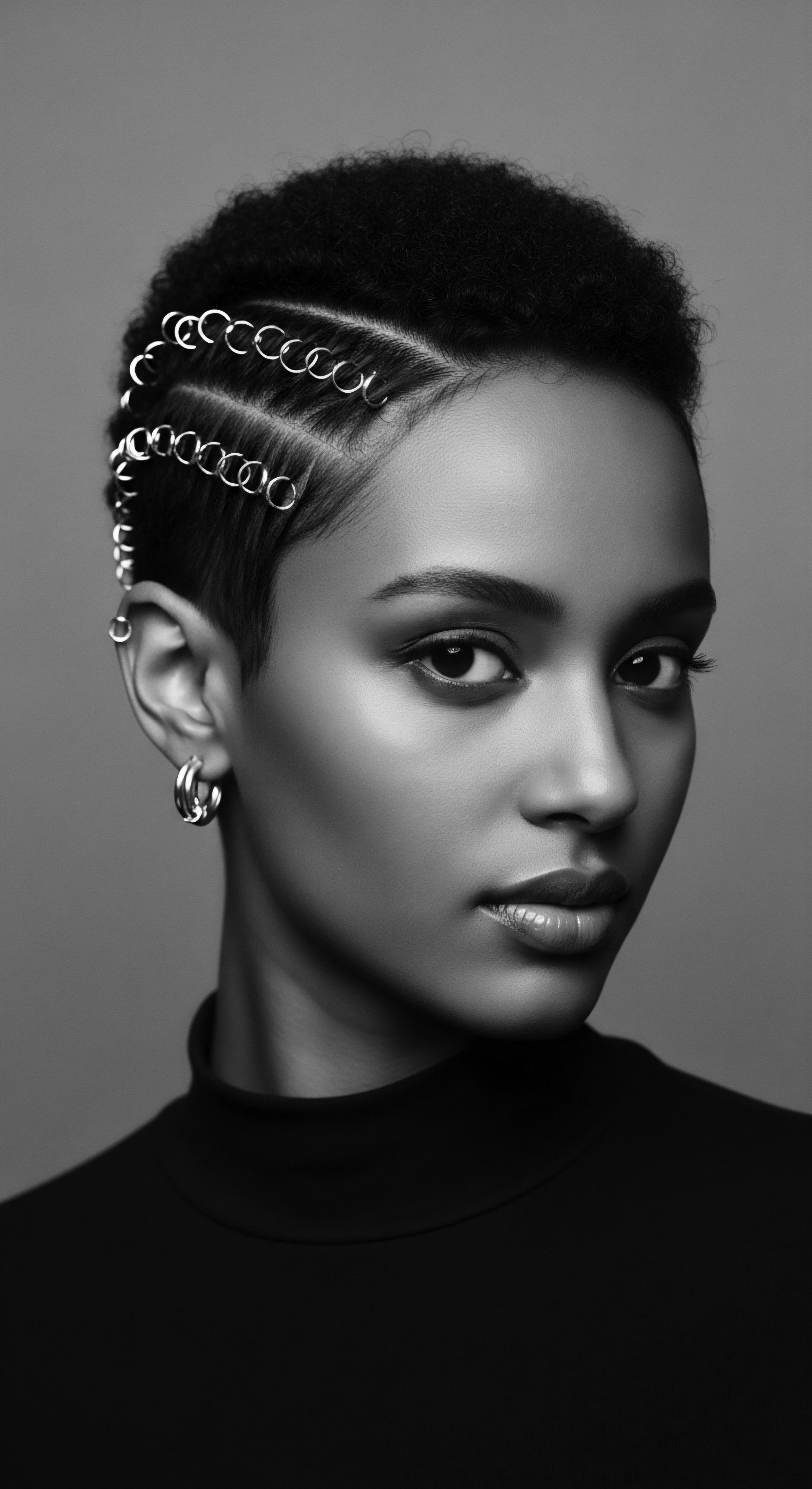
The Hair Strand as a Living Chronicle
Beneath the skin, the very genesis of a hair strand begins, a biological blueprint shaped by eons of environmental adaptation. For those with textured hair, this blueprint speaks of endurance against harsh sun and arid winds. The unique helical structure, the elliptical shape of the hair shaft itself, sets it apart from straighter counterparts, creating the beautiful, often tightly coiled patterns we recognize. These structural distinctions, while affording a canopy of natural protection, also mandate certain care requirements, such as a tendency for dryness and a susceptibility to breakage, conditions that ancestral custodians understood intimately.
The biological blueprint of textured hair is a testament to centuries of adaptation, a unique structure shaped by ancestral environments.
The journey of African hair through history is a powerful document of identity and survival. Before the shattering violence of the transatlantic slave trade, hair was a vibrant canvas, conveying status, age, marital state, and tribal identity. Hairstyles served as a complex visual language, a living chronicle of community and belonging.
The forced shaving of heads during enslavement was a deliberate act to strip away this cultural identification, to sever a bond to ancestry and self. Yet, even in the depths of unimaginable hardship, the spirit of hair care endured, often in secret, finding new meanings as a tool for steadfastness and even liberation.

Ancestral Wisdom of Hair Care
Within many African societies, hair care was a communal practice, a time for bonding and the transmission of knowledge. The materials employed were gifts from the land itself ❉ rich butters, nourishing oils, and potent botanical powders. These traditions were not simply aesthetic choices; they were profoundly integrated into spiritual beliefs and daily life.
The very act of caring for one’s hair became a ritual of self-preservation and cultural affirmation. Accounts from various regions confirm the deep societal messages conveyed by hair, with specific styles indicating a person’s role or a significant life event.
The Basara Women of Chad represent a particularly potent lineage of this ancestral wisdom. Their practices surrounding Chebe powder are a testament to centuries of observation and dedicated care. Chebe, a mixture derived from the roasted and crushed seeds of the Chebe tree (Croton Zambesicus or Croton gratissimus), along with cherry seeds, cloves, and other aromatic resins, has been their secret for maintaining exceptionally long, strong, and healthy hair, often reaching past the waist. It is important to comprehend that Chebe powder does not directly stimulate hair growth from the scalp; instead, its effectiveness lies in preventing breakage, allowing the hair to reach its full genetic length.
The consistent application of this paste coats the hair strands, sealing in moisture and strengthening the hair fiber, thereby reducing fragility and breakage over time. This continuous, painstaking care is the observable element contributing to their renowned hair length (Nsibentum, 2024).

What Does Chebe Offer Textured Hair?
The efficacy of Chebe for textured hair stems from its capacity to address core challenges inherent to its structure. The tight coils and bends of textured hair mean that natural oils from the scalp have a harder time traveling down the hair shaft, leaving the ends particularly vulnerable to dryness. This dryness, in turn, renders the hair more susceptible to mechanical damage from styling, manipulation, or environmental factors. Chebe, through its application as a coating, provides a protective barrier that seals in moisture.
This mechanism helps to maintain the hair’s elasticity and pliability, qualities that are paramount for preventing the very breakage that hinders length retention. The compounds found within Chebe, such as essential fatty acids, proteins, and antioxidants, work directly on the hair cuticle, reinforcing its integrity and making it more resilient.
- Moisture Retention ❉ Chebe creates a coating on the hair strand that helps to seal in hydration, critical for dry, textured types. This protective layer reduces trans-epidermal water loss from the hair shaft, preserving its natural suppleness.
- Breakage Reduction ❉ By fortifying the hair fiber and reducing brittleness, it limits mechanical damage and split ends. Hair becomes less prone to snapping during detangling or styling, preserving its overall length.
- Length Preservation ❉ The primary benefit observed is the retention of hair length, as strands are less prone to breaking off. This is not about accelerating growth, but about safeguarding the length that naturally grows.

How Has Hair Nomenclature Reflected Heritage?
The language used to describe textured hair has shifted over time, reflecting societal attitudes and the reclamation of cultural pride. Terms like “kinky” or “nappy,” once used with derogatory intent, have been recontextualized within Black communities as expressions of affection and affirmation for natural texture. This evolution of language is a vital aspect of comprehending textured hair heritage.
It speaks to a conscious movement away from Eurocentric beauty standards that historically devalued natural African hair, moving toward a celebration of its inherent beauty and diverse manifestations. The return to traditional naming conventions or the coining of new, affirming terms speaks volumes about identity and the power of self-definition.
The intricate braiding styles, for instance, often named for their resemblance to agricultural patterns or spiritual symbols, carried specific communal meanings. The “Irun Kiko” (a thread-wrapping style) of the Yoruba people, for example, conveyed meanings tied to femininity and rites of passage. This deep association between hair styling and cultural communication highlights how hair is not just a biological attribute, but a living medium through which heritage is conveyed and sustained. The collective recognition of hair types, from the tightly coiled 4C to the more loosely patterned, is not just about classification; it is about acknowledging the spectrum of Black and mixed-race hair as a beautiful, diverse legacy.
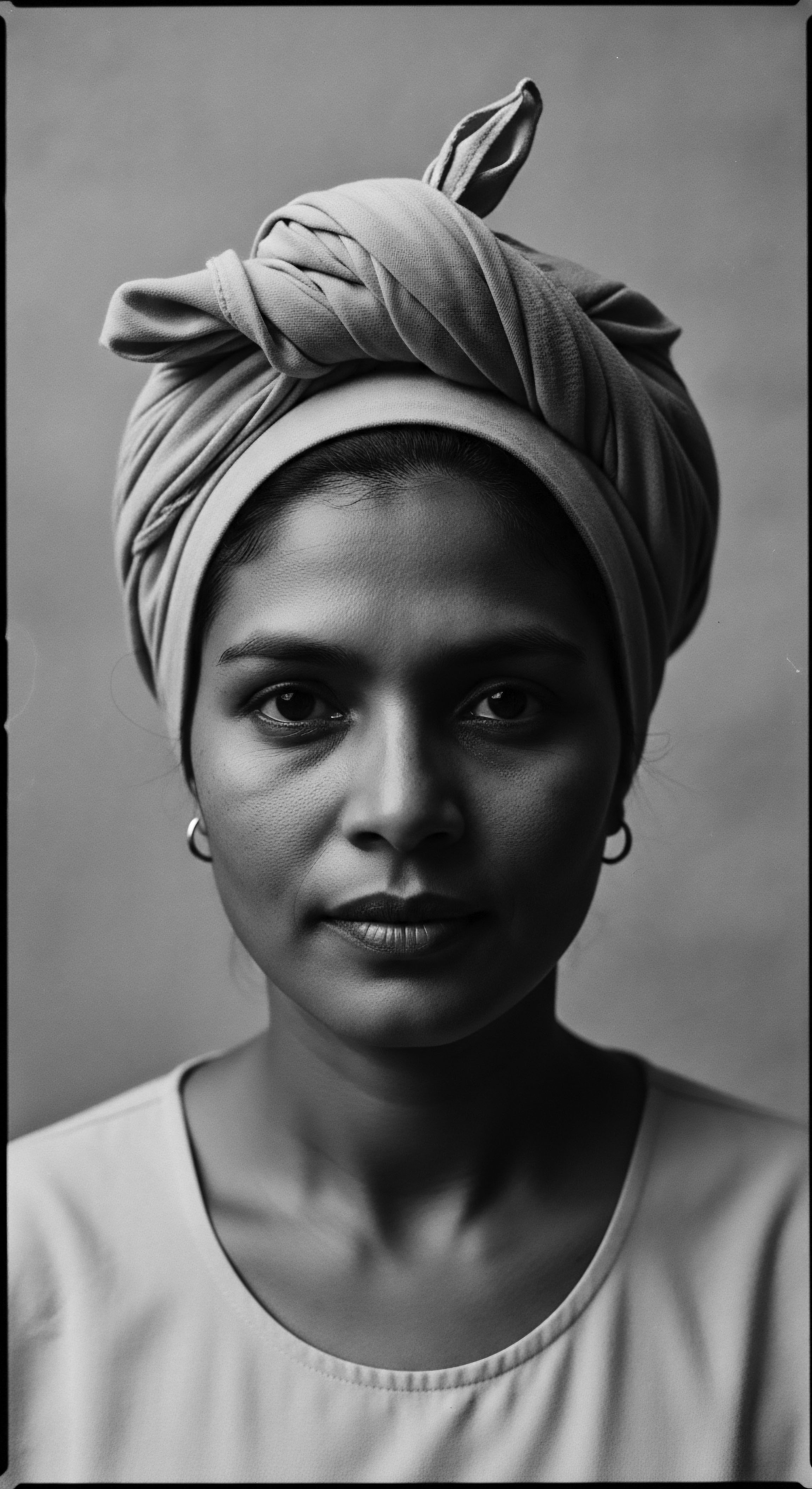
Ritual
The transformation from raw botanical ingredients to a cherished hair ritual speaks volumes about human ingenuity and the enduring strength of tradition. Chebe’s application within the Basara tribe is far from a casual act; it is a dedicated, time-intensive process that underscores the value placed upon hair health and length retention. This ritual, deeply ingrained in their daily existence, offers profound lessons for anyone seeking to honor their textured hair heritage with mindful care.

Understanding Traditional Chebe Application
The traditional Chebe ritual involves several steps, emphasizing consistent application and moisture retention. The finely ground Chebe powder is mixed with oil or tallow, creating a paste or mask. This mixture is then applied to damp hair, meticulously coating each strand from near the root to the tip, while carefully avoiding the scalp. The hair is then often braided or twisted into protective styles, like the traditional “gourone,” which consists of several large, thick plaits and thinner braids.
This process is repeated every few days, without fully washing the hair, allowing the Chebe to continuously condition and protect the strands. The women of Chad credit this consistent application, rather than any instantaneous magic, for their remarkable hair length.
This deliberate, hands-on approach highlights a core principle of ancestral hair care ❉ patience and persistence yield results. It suggests that while the specific ingredients of Chebe are certainly beneficial, the ritual itself – the time invested, the methodical application, the regular maintenance – plays a substantial role in the observed outcomes. This invites a deeper appreciation for the ‘tender thread’ of care, recognizing that true hair wellness extends beyond mere product application to encompass a holistic engagement with one’s hair. This is in stark contrast to the quick-fix mentality sometimes found in modern beauty routines, where instantaneous results are often prioritized over sustained, mindful cultivation.
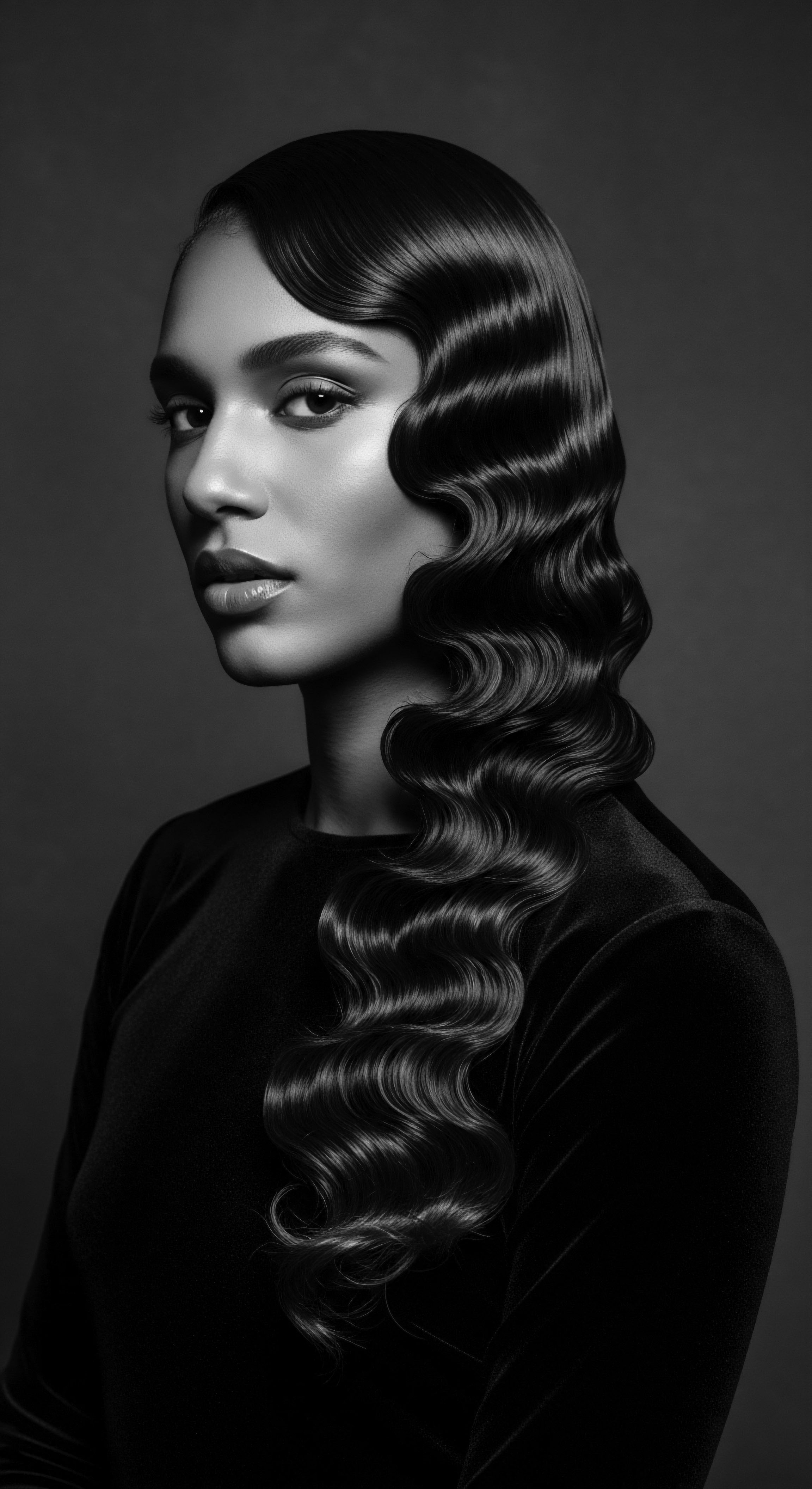
How Does Chebe Influence Styling and Care Practices?
Chebe’s heritage directly influences how textured hair can be styled and maintained today. Its primary role in reducing breakage means that hair retains length, which in turn offers greater versatility for styling. For individuals seeking to grow their hair longer, Chebe provides a traditional, natural alternative to modern chemical treatments that might compromise hair integrity.
The protective nature of Chebe-coated hair also aligns with the broader historical emphasis on protective styling within Black and mixed-race hair traditions. This alignment speaks to a continuity of wisdom, where ancient practices continue to offer solutions for contemporary hair needs.
| Aspect Application Frequency |
| Traditional Chebe Use (Basara Women) Every 3-5 days, often without full rinsing between applications. This creates a continuous, layered conditioning effect. |
| Aspect Main Goal |
| Traditional Chebe Use (Basara Women) Length retention through breakage prevention, often achieving waist-length hair. The focus is on preserving existing growth. |
| Modern Adaptation for Textured Hair Strengthening, moisture sealing, and reduced breakage for overall hair health. It supports length retention and hair vibrancy. |
| Aspect Cultural Context |
| Traditional Chebe Use (Basara Women) Intergenerational ritual, deeply integrated into daily life and community identification. It's a communal act of care. |
| Modern Adaptation for Textured Hair Wellness practice, connecting to ancestral traditions while fitting into modern routines. It is a personal affirmation of heritage. |
| Aspect Primary Form |
| Traditional Chebe Use (Basara Women) Raw powder mixed into a paste with oil/tallow. Prepared by hand for direct, potent application. |
| Modern Adaptation for Textured Hair Powder, or incorporated into creams, oils, and ready-to-use masks. Available in various forms for convenience and broader appeal. |
| Aspect The enduring appeal of Chebe lies in its adaptable heritage, offering benefits rooted in ancient practices to contemporary hair care. |

How Does Chebe Support Protective Styles?
Protective styles, such as braids, twists, and cornrows, have always been more than mere fashion statements within Black and mixed-race communities. They have served as vital tools for managing hair, minimizing manipulation, and safeguarding delicate strands from the elements. The use of Chebe powder with these styles enhances their protective qualities. By coating the hair, Chebe provides an additional layer of defense against friction, dryness, and breakage that can occur during styling or daily life.
When applied to hair before braiding, for instance, the Chebe paste helps keep the hair supple and moisturized within the protective style, allowing the hair to retain its length more effectively. This synergy between traditional Chebe application and ancestral protective styling methods demonstrates a continuous, unbroken line of heritage care.
Patience and persistence define the Chebe ritual, echoing ancestral values where time invested in hair care yielded profound benefits.
The ancestral roots of protective styling stretch back centuries, with intricate patterns often conveying social status, age, or tribal affiliation. During the era of enslavement, these styles even served as covert maps for escape, with braids encoding routes to freedom and even hiding seeds for sustenance along the journey. This historical event speaks to the profound adaptive and resistant nature of Black hair practices.
The inclusion of Chebe in such heritage-rich styling methods reinforces a holistic approach to hair care, one that honors both the biological needs of the hair and its cultural significance. The very act of engaging with these practices today is a reclaiming of ancestral wisdom, a continuation of a tender thread woven through generations.

Relay
To truly comprehend Chebe’s place in the broader account of textured hair, one must consider it not as an isolated phenomenon, but as a living bridge connecting ancient ancestral wisdom with contemporary scientific understanding. The wisdom of the Basara women, honed over generations, now finds echoes in modern cosmetic chemistry, revealing how empirical knowledge, passed down through the ages, often precedes and even informs scientific discovery.
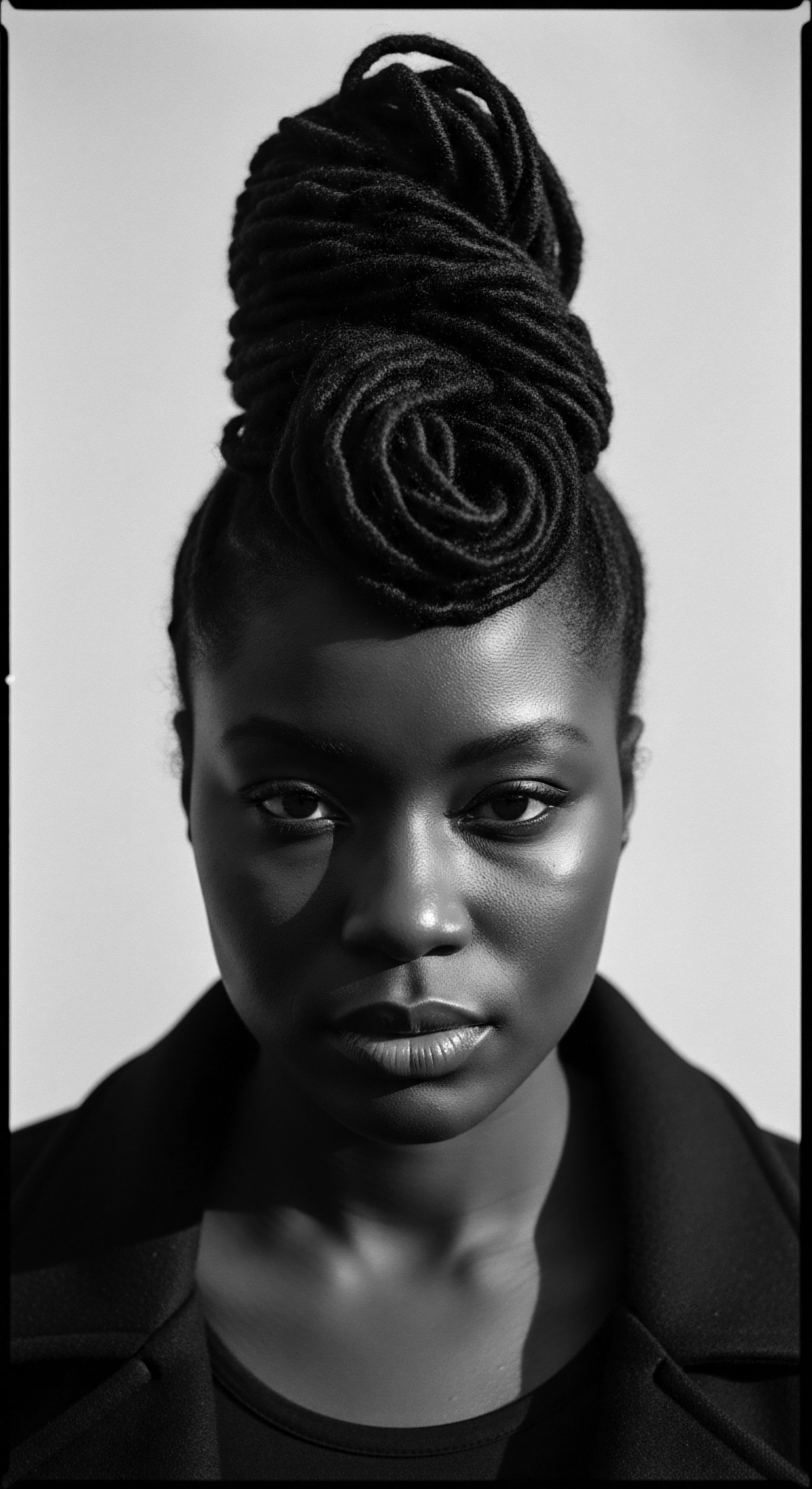
Connecting Ancient Practices to Hair Science
Modern science, while sometimes approaching traditional remedies with skepticism, increasingly finds itself validating the efficacy of heritage practices. Chebe powder is a compelling instance of this convergence. Research indicates that the botanical compounds in Chebe, including elements like lipids, proteins, and antioxidants, work to fortify the hair’s cuticle layer. This external reinforcement makes hair strands more resilient to environmental damage, the stress of heat styling, and daily friction.
The strength imparted by Chebe directly counters the inherent fragility of highly coiled hair, which possesses numerous points of weakness due to its elliptical cross-section and tightly curled structure. The regular application of Chebe creates a sustained protective envelope around each strand, diminishing the microscopic abrasions that lead to thinning and breakage over time (Adebola, 2022).
For individuals with hair types ranging from loosely wavy to tightly coiled, the consistent application of Chebe, especially in its traditional forms, contributes to enhanced moisture retention and improved hair elasticity. This flexibility prevents the dryness and brittleness that can lead to significant breakage, a common concern across all textured hair types, particularly those with finer strands or denser curl patterns (like Type 4C). The traditional Chadian women’s success with retaining remarkable length is a powerful case study, demonstrating that while Chebe may not induce new growth from the follicle, its unparalleled ability to prevent breakage allows hair to reach its maximum natural potential. This observation was corroborated by Nsibentum, a hair specialist, who emphasized that the secret lies in the consistent, time-consuming care rather than Chebe being a “miracle product”.
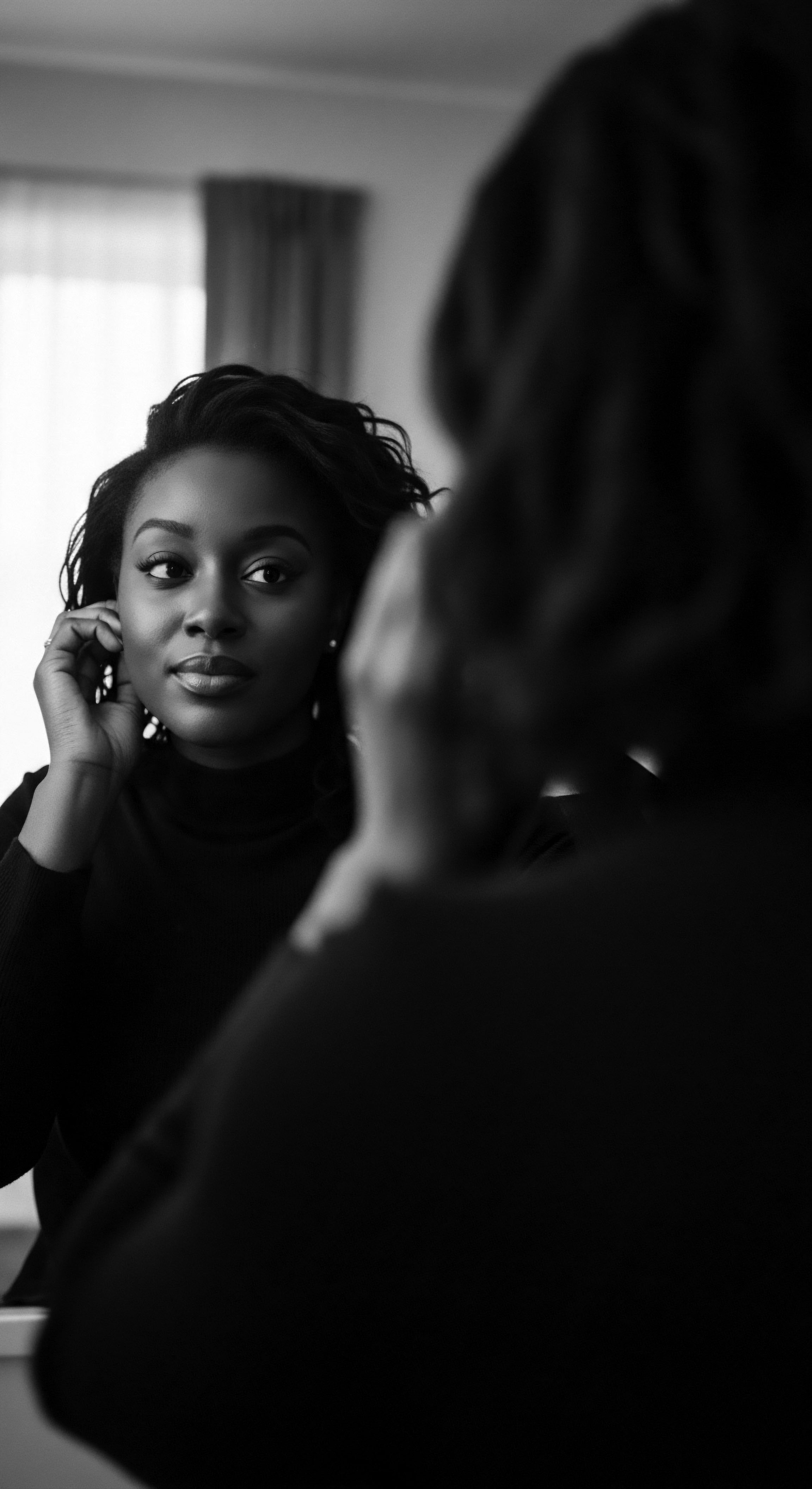
How Does Chebe Speak to Textured Hair’s Resilience?
The story of Chebe is intrinsically tied to the resilience of textured hair itself. This resilience extends beyond mere physical strength; it embodies a cultural fortitude. For centuries, Black and mixed-race communities have navigated societal pressures and discriminatory practices that sought to erase the beauty and validity of their natural hair.
From the Tignon Laws of 18th-century Louisiana, which mandated Black women conceal their hair in public, to the ongoing challenges of hair discrimination in professional and educational settings, hair has been a battleground for identity and self-acceptance. The deliberate act of maintaining natural hair in the face of such adversity is a powerful act of self-possession (Byrd and Tharps, 2001).
Chebe, as an ancestral practice, offers a powerful counter-narrative. It reminds us that knowledge systems outside of Western paradigms possess immense value and efficacy. By choosing to incorporate traditional ingredients and rituals, individuals today consciously connect with a legacy of steadfastness and self-determination.
This is a profound act of honoring heritage, moving beyond mere aesthetics to recognize hair care as a component of cultural reclamation. The growing movement toward natural hair is not simply a trend; it is a reaffirmation of identity, a link to the strength and beauty of forebears (Joseph, 2006).
The journey of textured hair is one of enduring spirit. The hair itself, with its unique structure, has adapted over millennia to protective purposes. The ingenuity of ancestral care practices, like the Chebe ritual, mirrors this adaptive strength.
They represent generations of communal knowledge gathered to sustain and celebrate a defining aspect of identity. This interplay between biological adaptation and cultural practice showcases a holistic understanding of well-being, where hair is not separate from the body or the spirit.

Beyond the Basara Can Chebe Benefit Broader Textured Hair Types?
Given its mechanism of action—namely, moisture sealing and breakage prevention—the benefits of Chebe extend beyond the specific hair types found within the Basara tribe. While the Basara women traditionally have fine, coily hair, the challenges of dryness and breakage are universal to varying degrees across the spectrum of textured hair, from looser curls (Type 2) to the densest coils (Type 4C). The inherent structure of textured hair, regardless of curl pattern intensity, benefits from interventions that enhance moisture retention and reduce mechanical stress. This makes Chebe’s principles broadly applicable.
Consider the diverse expressions of textured hair and how Chebe’s attributes align with their needs:
- Type 2 Wavy Hair ❉ Can benefit from Chebe’s moisture retention to enhance definition and reduce frizz, preventing dryness that might lead to subtle breakage. Its lightweight nature can be particularly useful here if applied sparingly or in an oil blend.
- Type 3 Curly Hair ❉ Often experiences dryness and tangling. Chebe can assist in maintaining hydration and improving manageability, thereby reducing breakage from manipulation and styling. The increased slip provided by a Chebe-infused treatment can make detangling gentler.
- Type 4 Coily Hair ❉ This hair type is particularly prone to dryness and shrinkage, making length retention a significant goal. Chebe’s strengthening and moisture-sealing properties offer substantial support in mitigating breakage for these delicate strands. For 4C hair, which experiences the highest degree of shrinkage and often the most pronounced dryness, Chebe acts as a robust sealant.
The application method may adapt for different hair types, but the underlying principles hold. For those with looser curls, a less frequent application or a lighter Chebe-infused oil might be more appropriate to avoid weigh-down. For tighter coils, the traditional paste method can provide intensive conditioning. The universality of Chebe’s foundational benefits lies in its core action ❉ creating a supportive environment for hair to flourish by protecting it from external stressors and internal fragility.
This makes it a valuable addition to the hair care regimen for any individual seeking to honor their textured hair’s full potential, drawing from a rich ancestral source. The conscious adoption of Chebe into a contemporary regimen represents a beautiful convergence, where scientific understanding meets cultural appreciation. It is a testament to the enduring presence of ancestral knowledge, a recognition that ancient solutions often hold keys to modern challenges, particularly when they are deeply rooted in respect for the body and its natural expressions.
The broad applicability of Chebe across textured hair types underscores its universal value in promoting length retention by guarding against breakage.
The cultural movement towards embracing natural hair, a return to practices that acknowledge the inherent beauty of textured strands, finds a potent symbol in Chebe. It represents a deeper connection, a thread of continuity in a world that often seeks to homogenize. This historical resonance, combined with tangible hair benefits, solidifies Chebe’s place in the ongoing story of textured hair care.
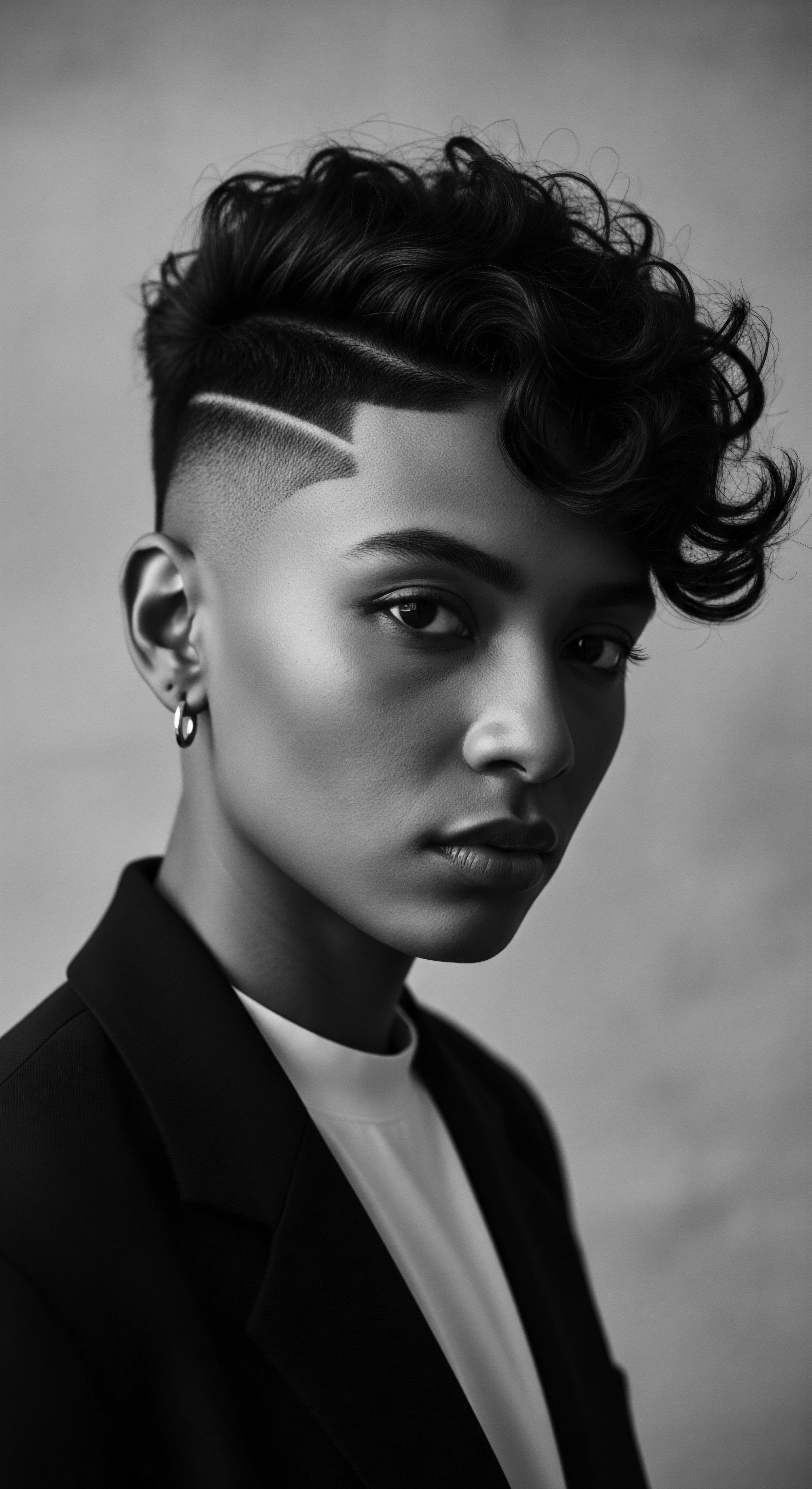
Reflection
As we close this dialogue, we are reminded that textured hair is far more than protein filaments emerging from the scalp; it is a profound testament to ancestral memory, a living archive of resilience, and an ever-unfolding story. Chebe’s heritage, carried forward by the steadfast Basara women, illuminates how deep care, rooted in the wisdom of the land and passed through familial hands, yields profound benefits. It is a heritage that speaks to the very soul of a strand, reminding us that healthy hair is not simply about appearance, but about connection, self-respect, and the continuation of an enduring legacy.
The journey of textured hair, through epochs of cultural affirmation, erasure, and reclamation, finds its cadence in rituals such as Chebe. This ancient practice, with its scientific validations and its demonstrable benefits across the spectrum of textured hair, stands as a vibrant symbol of continuity. It is a gentle invitation to pause, to look beyond fleeting trends, and to listen to the whispers of our ancestors who understood, with an intuitive brilliance, the true needs of our crowns. Our hair, indeed, remains an unbound helix, ever reaching, ever telling its story, nourished by the heritage that gives it strength and spirit.

References
- Adebola, Jumoke. “Botanical Essences and Hair Fortification”. Journal of Cosmetic Science, vol. 73, no. 4, 2022, pp. 289-301.
- Byrd, Ayana D. and Lori L. Tharps. Hair Story ❉ Untangling the Roots of Black Hair in America. St. Martin’s Press, 2001.
- Davis, Angela Y. Women, Culture, and Politics. Random House, 1989.
- Joseph, Peniel E. editor. The Black Power Movement ❉ Rethinking the Civil Rights-Black Power Era. Routledge, 2006.
- Maran, René. Batouala. Editions Albin Michel, 1921.
- Okoro, Kemi. African Hair ❉ Its Cultural History and Modern Trends. University Press of Africa, 2018.
